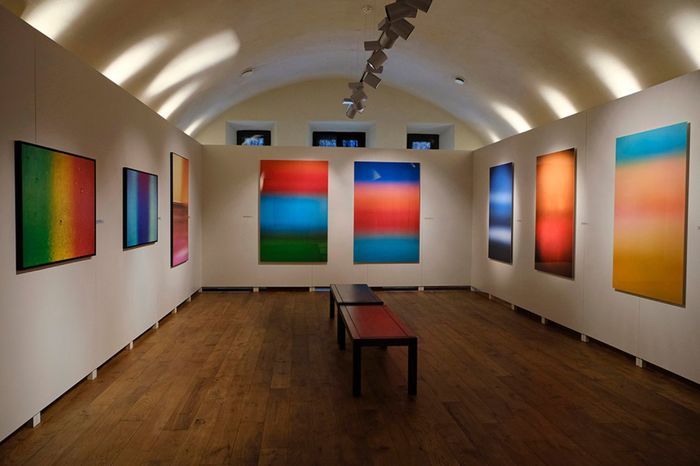‘Rembrandt, Rubens, and Van Dyck’ at The Fitzwilliam: sketches which invite discussion
Ben Birch explores how the new exhibition of Dutch and Flemish masters encourages chatter among the silent worship of the gallery space

Many have compared the art gallery with a place of worship. They are both speechless spaces. Even when they are filled with sound, it is only with the voices of guides and priests. As laymen, we keep quiet in the presence of its cultural relics. Since we feel that they are in some way beyond us, we think we would do best to stay mute in front of them. In the aftermath of May Week, I decided to take myself to the quiet of The Fitzwilliam Museum in order to offer penance.
“You lose the pious whispers of gallery-goers as the imposing sanctity of oil paintings is replaced by quiet, unframed sketches”
After having begun my pilgrimage by way of a wincing statue of St. Sebastian and several scowling Netherlandish faces, I arrived at the Shiba Room. You’d be forgiven for passing through the Shiba Room as if it were nothing more than a decorated hallway. Contained within it is the ‘Rembrandt, Rubens, and Van Dyck’ exhibition. But it didn’t feel like I was in the presence of old masters. Unlike the visitors’ hushed homages in the rest of the museum, the volume of conversation swelled in the Shiba Room. You lose the pious whispers of gallery-goers as the imposing sanctity of oil paintings is replaced by quiet, unframed sketches. I overheard conversations about how, in winter, Nick’s mother used to skate down the frozen river at Ely, how the funeral of an art teacher went unattended in lockdown, and several other conversations in languages I cannot speak.
The unassuming nature of these sketches invites this kind of discussion. Some are so lightly sketched that it’s hard to identify their focus. In Jordaens’ ‘Old man drinking’, you can barely make out the outline of his glass. Likewise, his ’The head of a rider, mauled by a lion′ contains no lion, no claws, only shocked agony. This sketch is hung near Van Dyck’s ‘Head Study of a Reclining Woman’. They are peculiar neighbours, peering across at each other. Both are the product of such light touches that, despite their differing subject matters, they only suggest something pained. Rubens’ ‘Study for Mary Magdalene’ has a faint suggestion of the figure’s torso, and nothing but the placard beside the piece would indicate anything holy, let alone the specificity of the artist’s intended subject matter. In all of these cases, I had to shamefacedly shuffle over to the small, explanatory signs beside the works just to know what to begin thinking.
“These sketches cannot demand our attention, nor do they try to”
The sketch is a disarming thing. It poses as incomplete and inconsequential. It does not have the gravitas of an oil painting. For these reasons, we are not shut up as we look at it. One could easily mistake the landscape sketches of Cuyp, Goyen, and Velde for E.H. Shepard’s illustrations of Winnie the Pooh. Visitors passing through the Shiba Room are no longer confronted by the gilded iconography of the museum’s grander pieces. Perhaps, in our reactions to these preliminary sketches, we forget the grand works that they would turn into – Jordaens’ indistinct old man would go on to become the centrepiece of his oil painting ‘The King Drinks’.
Maybe it is because they are laid below our eyeline, rather than hung above us in ornate frames, looking down on us, that we feel we can speak freely in front of sketches. This is not to say that we should be muted in their presence, nor that we should prioritise small talk when in front of masterpieces. The Shiba Room is a lesson in circumstance. These sketches cannot demand our attention, nor do they try to. Rather, to their credit, they invite chatter. This is something that we might cherish, rather than frown at. The gallery does not have to be a silent holy space where we fear saying the wrong thing. Instead, we might experience works of art alongside the hum of conversation which they provoke.
‘Rembrandt, Rubens, and Van Dyck’ is open at The Fitzwilliam Museum between 30th April 2024 – 4th August 2024. Entry is free.
 Comment / Cambridge students are too opinionated 21 April 2025
Comment / Cambridge students are too opinionated 21 April 2025 News / Candidates clash over Chancellorship25 April 2025
News / Candidates clash over Chancellorship25 April 2025 Comment / Does the AI revolution render coursework obsolete?23 April 2025
Comment / Does the AI revolution render coursework obsolete?23 April 2025 News / Cambridge professor paid over $1 million for FBI intel since 199125 April 2025
News / Cambridge professor paid over $1 million for FBI intel since 199125 April 2025 Comment / Cambridge’s tourism risks commodifying students18 April 2025
Comment / Cambridge’s tourism risks commodifying students18 April 2025






